Description
Ascentta, Inc. offers a wide range of isolators designed to meet various application requirements. Our isolators are available in single mode, multimode, and polarization-maintaining (PM) configurations.
The Polarization Maintaining (PM) isolator comes in single stage or dual stage models to accommodate customer's need for isolation. The typical wavelengths are 1310nm, 1480nm, 1550nm, and 1590nm. We also specialize in customizing isolators to match specific application needs in O-band, C-band or L-band.
Ascentta Polarization Maintaining (PM) Fiber Optic Isolator (1310nm, 1480nm, 1550nm, 1590nm, 1625nm)
Specifications
| Type Of The Device: | Isolator |
|---|---|
| Operating Wavelength: | 1310 nm |
| Max Power: | 0.3 W |
| Min Isolation: | 30 dB |
| Insertion Loss: | 0.4-0.5 dB |
| Return Loss (Input/Output): | 55 dB |
| Extinction Ratio (Both Axes/Slow Axis Only): | 25 dB |
| Fiber Length: | 1.0 m |
| Operation Temperature: | 0 to +60 °C |
| Storage Temperature: | -5 to +60 °C |
Features
- Available for various wavelengths including 1310nm, 1480, 1550nm, and L-band
- High-isolation options for improved performance
- PM Panda Fiber
- Miniature versions available for space-constrained setups
- Available also in hybrid configurations combining tap, or WDM functionality with isolators
- Available in custom wavelength and configuration
Applications
- Telecommunications and data communication networks
- Fiber optic amplifiers and lasers
- Fiber optic sensing systems
- Optical signal routing and protection
- Test and measurement setups
- Fiber optic research and development
Frequently Asked Questions
What is the product?
The product is a Polarization Maintaining (PM) Isolator. It operates at one of the following wavelengths: 1310, 1480, 1550, or 1590 nm and it comes in two types: single stage or dual stage.
What is the operating wavelength range of the Isolator?
The operating wavelength range for the isolator is ±20 nm around the central wavelength of either 1310, 1480, 1550, or 1590 nm. This indicates the range within which the isolator can operate effectively.
What are the Isolation values for each stage type?
For the single stage isolator, the typical Isolation at 23℃ (room temperature) is 40 dB, and the minimum is 30 dB. For the dual stage isolator, the typical Isolation is 55 dB, and the minimum is 45 dB. Isolation refers to the extent to which the isolator prevents undesired signal flow in the opposite direction.
What are the Insertion values for each stage type?
For the single stage isolator, the typical Insertion Loss at 23℃ is 0.4 dB, and the maximum is 0.6 dB. For the dual stage isolator, the typical Insertion Loss is 0.5 dB, and the maximum is 0.7 dB. Insertion Loss refers to the signal power loss as the signal goes through the isolator, so a lower value means more efficient transmission.
What is the Return Loss?
The minimum Return Loss for both input and output is 55/50 dB for both single stage and dual stage. Return Loss is a measure of the power that is lost as light is reflected back towards the source. A higher Return Loss signifies lower reflection and better performance.
What is the Extinction Ratio?
The minimum Extinction Ratio is 20/25 dB for both axes/slow axis only for both single stage and dual stage. This is a measure of the power contrast between two polarization states in a signal. A higher Extinction Ratio signifies better performance in maintaining polarization-dependent transmission.
What is the maximum Optical Power Handling?
The maximum Optical Power Handling is 300 mW. This is the maximum level of light power that the isolator can handle without being damaged.
What are the operating and storage temperatures?
The Operating Temperature range is from 0 to 60 degrees Celsius, and the Storage Temperature range is from -5 to 60 degrees Celsius. These ranges indicate the temperatures within which the isolator can operate safely and be stored without damage.
What is the package dimension?
The Package Dimension for this isolator is Φ5.5 x L35 mm.
How do connectors affect the Isolator?
The specifications provided are for parts without connectors. Adding connectors can affect the Insertion Loss, Return Loss, and Extinction Ratio of the isolator. The connector key is aligned to the slow axis.
How can I order this product?
To order this product, you should contact Ascentta directly. The company allows you to specify custom configurations, including stages, wavelength, working axis, fiber type, fiber length, and connectors.
What do the different working axes represent?
The working axes options include both axes and slow axis only. If 'Both axes' is chosen, the isolator will maintain the polarization state along both axes of the PM fiber. If 'Slow axis only' is chosen, the fast axis will be blocked, and the isolator will only maintain the polarization state along the slow axis.
What fiber types are available?
The available fiber types are PM Panda with diameters of 250um, 400um, and 900um. These are polarization-maintaining fibers with a special design (known as 'Panda') to ensure the light maintains its polarization state as it travels through the fiber. You can specify the fiber type based on your application needs when ordering.
What fiber lengths are available?
The available fiber lengths are 1.0m, 1.5m, 2.0m, and 3.0m. You can specify the fiber length based on your application needs when ordering.
What connector types are available?
The available connector types are FC/APC, FC/PC, SC/APC, SC/PC, ST/PC, LC/APC, and LC/PC. You can specify the connector type based on your application needs when ordering. Each type of connector has its own features and suitability for different applications. For instance, APC connectors provide a lower back reflection than PC connectors, making them better suited for high-speed digital systems or analog video systems.
Similar Products

Ascentta High Directivity Ultra-broadband 3-port Optical Circulator
Ascentta

Ascentta Isolator Hybrid: Tap Coupler + Isolator
Ascentta
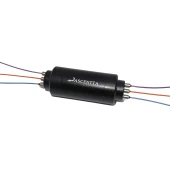
Ascentta’s Optical TGG-Type Isolator Array
Ascentta

Ascentta Isolator-WDM Hybrid (IWDM)
Ascentta

Isolator Array (1310, 1480, 1550, 1590nm)
Ascentta

4-channel Circulator Array
Ascentta
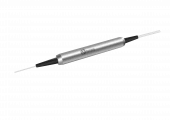
1550nm Polarization Maintaining Isolator/Wavelength Division - PMIWDM Series
GKER Photonics
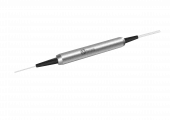
1550nm Polarization Maintaining Isolator/Wavelength Division Multiplexer Hybrid
GKER Photonics
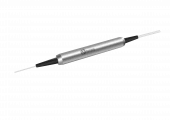
1530 -1580nm Polarization Maintaining Isolator/Wavelength Division Multiplexer Hybrid - PMIWDM Series
GKER Photonics

1030nm High Power Polarization Maintaining Isolator
GKER Photonics
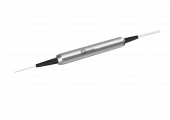
1530 -1580nm Polarization Maintaining Isolator/Wavelength Division Multiplexer Hybrid
GKER Photonics
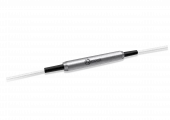
C Band Red/Blue Wavelength Division Multiplexer
GKER Photonics
Thank You!
Your inquiry has been received.
Create an account by adding a password
Why create an account?
- Auto-complete inquiry forms
- View and manage all your past messages
- Save products to your favorites
- Close your account anytime — no hassle

